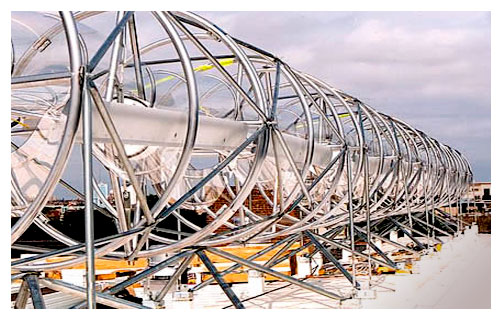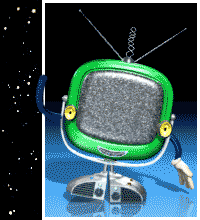Chicago Wind: Harnessing the Windy City
A D V E R T I S E M E N T




Making enough power to satisfy the world's constantly increasing demands might be considered a baffling prospect. How can we power all the refrigerators, televisions, music players, and all the other things we use every day while making sure we don't hurt other animals or the planet?
Dr. Bil (yep, that's one "l") Becker is thinking about that challenge, too. A University of Illinois-Chicago professor and an inventor, Becker has become a futuristic visionary of the new metropolis. He has developed a kind of wind turbine that takes the idea of the windmill and adapts it for use in an urban environment.
Traditional windmills were first used in ancient China and Persia, possibly as long ago as the 7th century AD. After the 12th century, they became common in the Netherlands, where they were used to mill corn, for saw mills, and for draining the land claimed from the sea. Today we use windmills today to harness energy from the wind; but these new windmills look much different. A wind turbine, which is a modern version of the windmill, uses power from the wind to generate electricity. The wind turns the turbine's blades, which are connected to a shaft that spins around and produces electricity.
There are some drawbacks specific to modern wind-based energy, however, that have prevented it from becoming more widespread. Conventional wind turbines need to be where the wind is consistent and plentiful, and where there aren't many obstacles, such as trees or buildings, that can get in the wind's way and slow it down. So turbines are usually placed in groups on rural "wind farms," coastal areas or islands, or even offshore. Such places, however, can often be far from where the energy created is actually consumed. Another challenge is the birds--or bats--who suddenly find a big turbine blade smack in the middle of their flight path: at high speeds, the whirring blades are invisible to birds and they fly right into them, with bad results for the windmill and far, far worse ones for the birds. Wind turbines also face aesthetic challenges--some people think they're ugly, and in low winds the turbines can become quite noisy. As tall as 300 feet high, with a blade span of up to 250 feet, modern windmills definitely stand out, especially when they're part of a large wind farm. In contrast, coal- or nuclear-powered electricity plants' physical structures can be tucked away behind trees or man-made hills—even if the short- and long-term pollution and other hazards they create can't be hidden so easily. (For our full story on the pros and cons of wind energy, go to BGTV's "Energy Sources" section.)
Meanwhile, back in Chicago, Becker was pondering these problems and the problem that vexed him (and his colleagues) the most: in their own hometown, Chicago, the "Windy City," they were surrounded by a promising renewable resource--but they couldn't capture it for use. Trying to put a 150-foot wind turbine on top of a skyscraper would be impossible. Placing these windmills on lower buildings, or even on new buildings designed to accommodate the windmills would be impractical as well, because the maze of buildings in dense urban areas create their own constantly changing wind currents. It seemed as if the only way to harness Chicago's amazing winds was to rebuild the entire city from scratch and design it especially for wind turbines.
So instead of redesigning Chicago, Becker redesigned the wind turbine, creating a series of "Aeroturbines" that may someday bring us closer to his vision of a no-emissions world, where buildings can create all the energy they consume. Becker has addressed each of the problems that made typical wind turbines unworkable for cities: Employing a special helical blade structure, AeroTurbines are compact, usually around only 6 by 10 feet; they are designed to be mounted to buildings, singly or in groups; they can catch and use wind blowing in multiple directions and at differing speeds (from 6 miles per hour to more than 70); they are bird-friendly; they are practically noise- and vibration-free; and they are significantly less expensive to deploy and maintain than traditional wind turbines. Additionally, some "hybrid" models are equipped with solar panels, combining two forms of renewable energy generation. According to Becker, each turbine can generate enough energy to supply about half the power used by an energy-efficient home.
Today many buildings, most in the Windy City, are utilizing Becker's AeroTurbines. Eventually perhaps these turbines or similar machines will help people make the most of this highly available, completely renewable, free natural resource.
- Written by Thea Herzner
For more information on wind energy go to:
Aerotecture International:
www.aerotecture.com
Horizon Wind Energy,
"How Does a Wind Turbine Work?":
www.horizonwind.com
Windmill World,
"History of Windmills":
www.windmillworld.com









